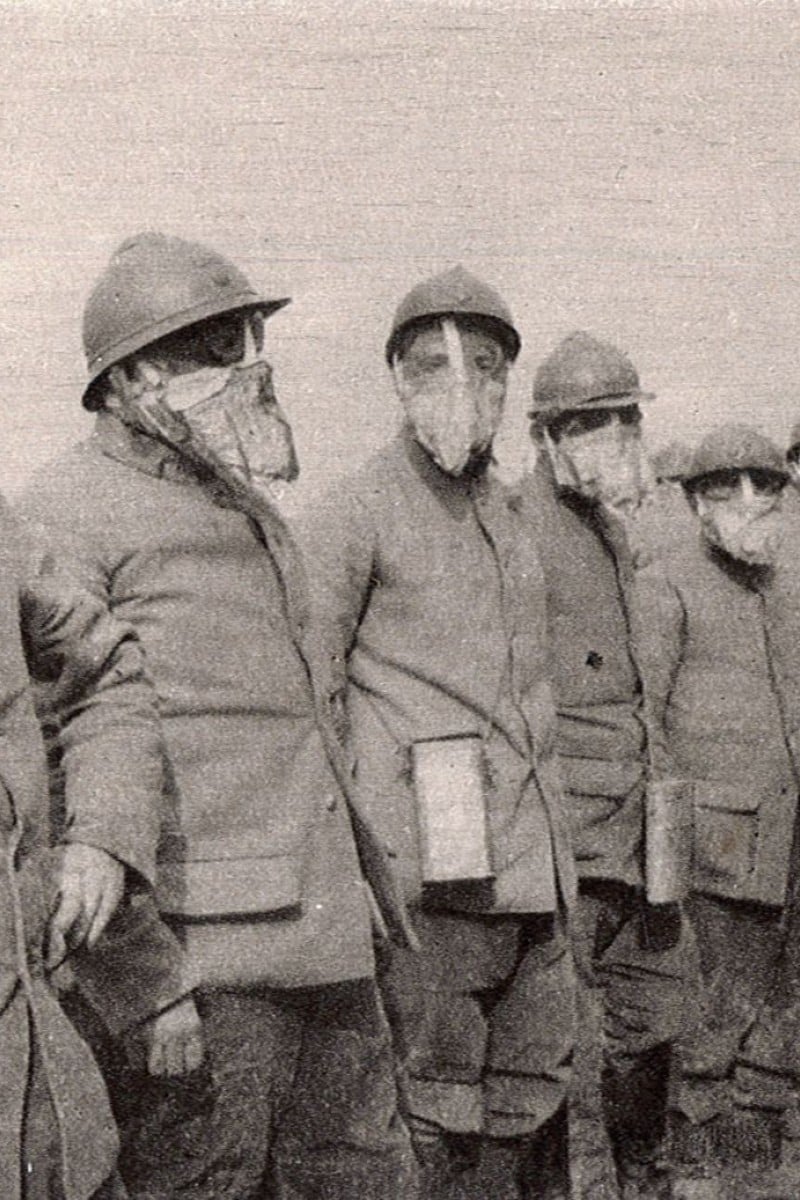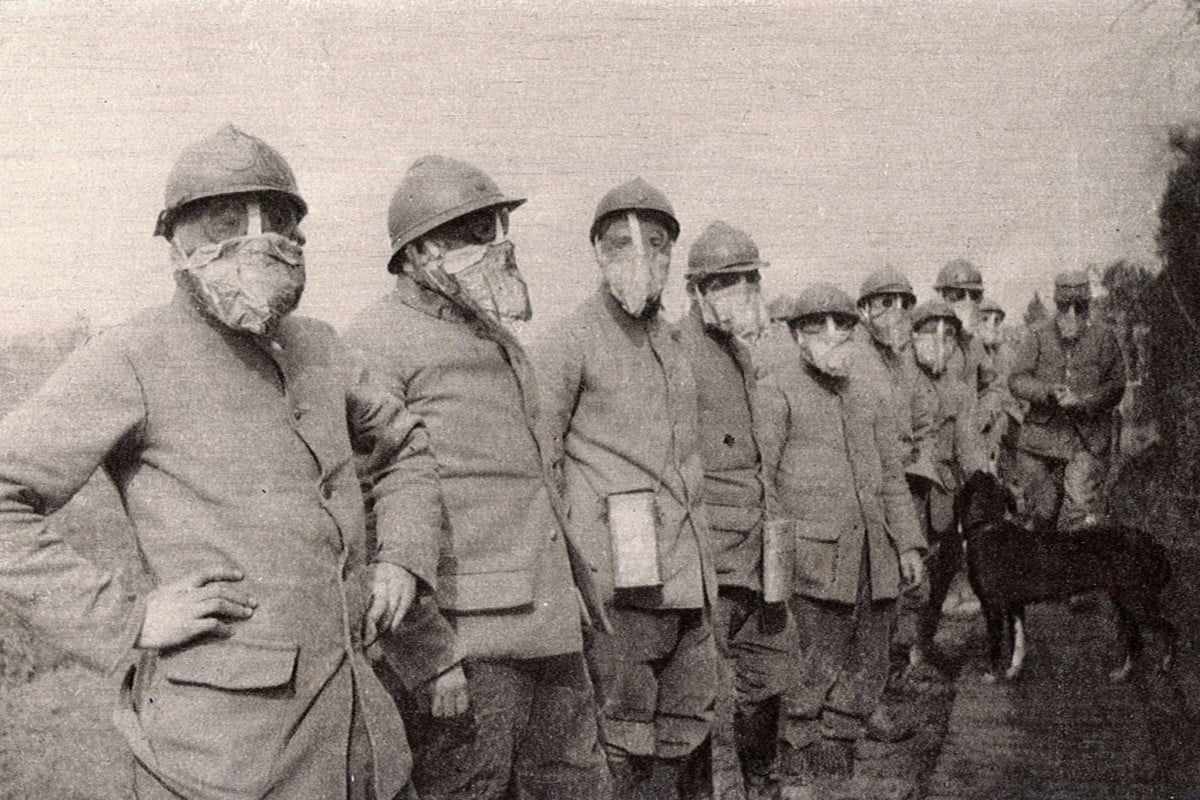
WWI Centenary: The first world war saw the birth of modern chemical weapons, with poison gas and mustard gas spreading terror
Although gas attacks killed a relatively small number of people compared to the total, the fear and injuries they caused added to the suffering
 Soldiers had to keep gas masks at the ready to avoid the effects of poison gases.
Soldiers had to keep gas masks at the ready to avoid the effects of poison gases.On April 22 1915, a greenish fog drifted over the battlefield north of Ypres in Belgium, choking to death some 5,000 French soldiers and heralding a new type of terror on the Western Front.
The first world war saw the first widespread combat use of modern chemical weapons, starting with the 168 tonnes of chlorine released by the Germans over the trenches near Ypres.
Officers hoped the vomiting, suffocation and burns caused by poison gases would force troops to abandon positions in what quickly became a standoff between German and allied forces.
They also had a deep psychological impact, forcing soldiers to keep masks at the ready for fear of falling victim to a silent killer.
This stage musical inspired by the first world war is an important reminder of the stupidity of war
“Gas masks and their grotesque appearance became the ultimate symbol of a man turned into a mechanised, dehumanised phantom by modern warfare,” said Doran Cart, a curator at the National World War I Museum in Kansas City, in the US.
“That had a huge impact on civilians,” he added.
The Germans’ use of chlorine prompted a chemical arms race in which scientists and military leaders worked hand-in-hand to develop more lethal weapons.
French researchers soon developed phosgene, with a more subtle “mouldy hay” odour that was harder to detect and the ability to cause suffocation hours after being inhaled.
It was quickly copied by the Germans as both sides sought chemical agents which would seep into trenches and bunkers.
The scary truth and fascinating military history behind HK’s buried wartime bombs
‘Fighting for breath’
But the most infamous - and deadliest - was mustard gas, in reality an oily vapour first used by the Germans in July 1917, again near Ypres.
Known as the “King of Battle Gases”, it acted by contact instead of having to be inhaled, getting through clothing to cause severe burns.
“It didn’t always kill but the burns impaired people for a long period of time and required a very long nursing,” said Edward Spiers, a professor of strategic studies at Leeds University in Britain.
“It slowed everything down. People had to try to decontaminate whole areas” before attempting to get through it, said Spiers, author of A History of Chemical and Biological Weapons.
Kamikaze survivors share stories of sacrifice, tragedy and loyalty
Overall an estimated 90,000 people were killed by gas attacks, and a further 1.2 million injured, sometimes when the poisonous clouds released by artillery shells drifted back into an attacker’s lines.
But despite the relatively small number of deaths compared with the 9.7 million soldiers killed in total during the war, the fear and suffering caused by chemical arms became symbols of a harrowing new era in modern warfare.
“I wish those people who talk about going on with this war whatever it costs could see the soldiers suffering from mustard gas poisoning,” the British nurse Vera Brittain wrote in her memoir Testament of Youth.
“Great mustard-coloured blisters, blind eyes, all sticky and stuck together, always fighting for breath, with voices a mere whisper, saying that their throats are closing and they know they will choke,” she wrote.
An amazing story of one man's life during the Japanese occupation of Hong Kong
‘Psychological scar’
After the war ended, officials quickly pushed to outlaw chemical weapons in war, signing the Geneva protocol in 1925, which nonetheless failed to set up a system for monitoring or punishing their use.
“The use of such weapons left a psychological scar in ways that conventional weapons did not,” Spiers said.
“In most societies that used them, the use of chemical warfare was vilified [criticised], but it was never quite removed from the world’s arsenal,” Spiers added.
Chosen as a symbol because they grew over the graves of soldiers, paper poppies are still important
As soon as 1926, French and Spanish forces would employ them against Moroccan rebels in the Rif Mountains.
“It truly is, and this hasn’t changed since World War I, a terror weapon. It creates terror,” Cart said.
But even though they are still used today - Syrian President Bashar al-Assad has been accused of repeatedly gassing rebels and civilians in his war-torn country - only in the first world war were poison gases used on a large scale in combat.
“What’s occurring today is not primarily military but used against civilians,” Cart said.
